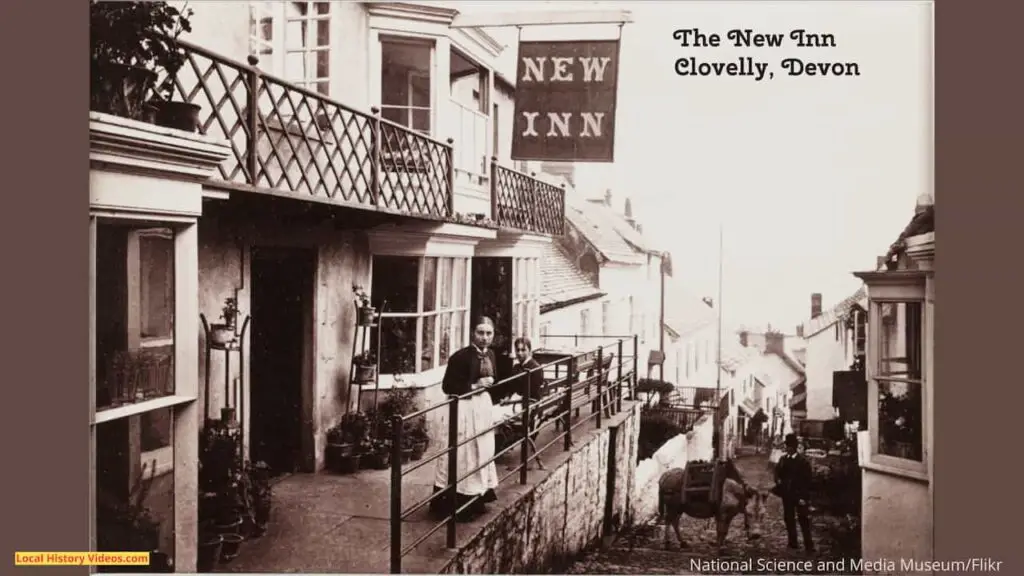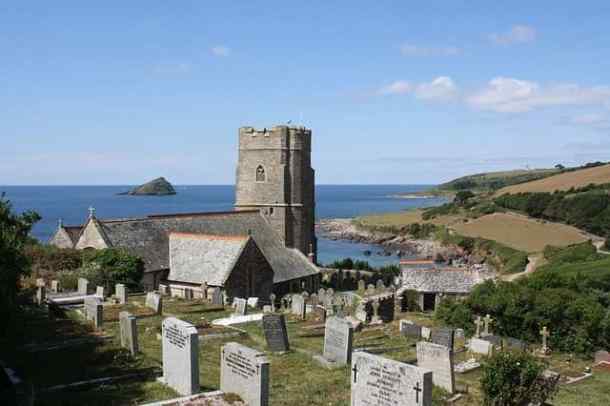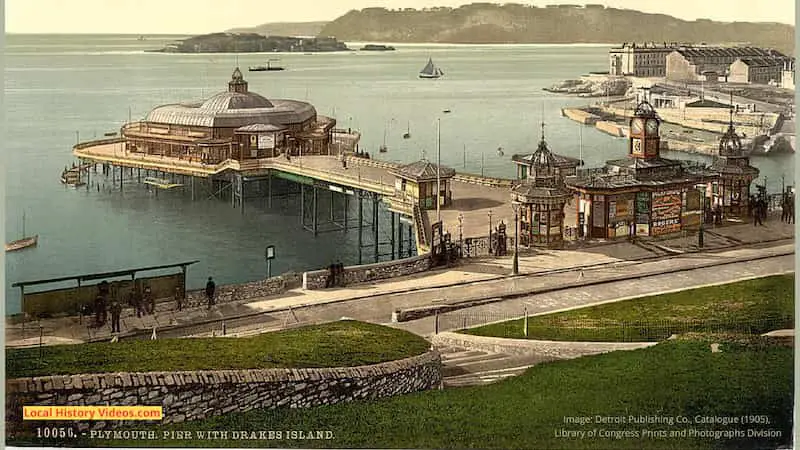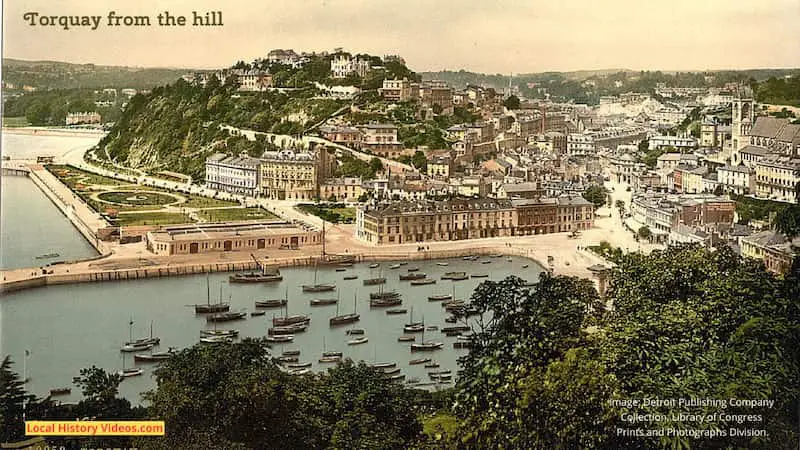Glimpse the past through old images of Exeter, in the beautiful English county of Devon.
Founded by the Romans and boasting both an ancient cathedral and a university, the English City of Exeter in Devon has a rich and engaging history.
ANZAC Soldiers Parade: WWI
British Pathé brings us this film from the Great War (World War I) which is a reminder of the important role played by ANZAC soldiers.
Despite living on the other side of the world, thousands of men from Australia and New Zealand volunteered for duty to fight on behalf of the UK and her allies.
Here we see Australian and New Zealand soldiers at Exeter taking part in a ceremonial extravaganza, with plenty of flag waving.
Australians At Exeter (1914-1918) – British Pathe on YouTube
Memorial Cross 1921
British Pathé brings us this footage of Prince Edward the Prince of Wales visiting the West Country in 1921, just three years after the end of the Great War (World War I).
He is seen unveiling the Memorial Cross at Exeter in the presence of crowds and troops, and then laying a wreath in remembrance of the local men who died in the war. He’s then seen conversing with a priest, and war veterans.
It was to be another 15 years when, in 1936, the then King Edward VIII caused a constitutional crisis by first proposing marriage to the American divorcee Wallis Simpson, and then abdicating.
Prince Of Wales In Exeter (1921) – British Pathe on YouTube
H.M.S. Exeter 1931
This British Pathé not only captures the sights but also the sound and speeches of the Mayor of Exeter (H W Michelmore), the Captain of H.M.S Exeter, town dignitaries and the Royal Navy cruiser’s crew. We watch a replica of the ancient city of Exeter being officially presented to her nameship H.M.S. Exeter, and accepted by the Captain.
Consider Yourselves Citizens Of Exeter Afloat (1931) – British Pathe on YouTube
HMS Exeter went on to have a temporary deployment with the Mediterranean Fleet during the Abyssinia Crisis of 1935–36, but was mostly assigned to the Atlantic Fleet or the North America and West Indies Station until the outbreak of World War II in September 1939.
Assigned to patrol South American waters against German commerce raiders, HMS Exeter was one of three British cruisers that fought the Admiral Graf Spee in the Battle of the River Plate. Damaged during the battle, the ship was confined to a shipyard for repairs for over a year.
Most of 1941 saw convoy escort duties until December, when the Pacific War began. A transfer to the Far East to escort convoys to and from Singapore during the Malayan Campaign continued into early February 1942 as the Japanese prepared to invade the Dutch East Indies. Assigned a more active role in the defence of the Dutch East Indies, HMS Exeter now joined the Striking Force of the joint American-British-Dutch-Australian Command (ABDACOM).
Unfortunately that same month an attempt to intercept several Imperial Japanese Navy invasion convoys led to the Battle of the Java Sea. HMS Exeter was quickly damaged and withdrew. Two days later approaching Japanese forces caught HMS Exeter as she tried to escape, and the warship was sunk in the Second Battle of the Java Sea.
Although most of the crewmen survived the sinking, about a quarter of them subsequently died under the infamously cruel Japanese captivity.
The wreck of HMS Exeter was discovered in early 2007 and quickly declared a war grave.
Unfortunately, by 2016 her remains had been destroyed by illegal salvagers.
Exeter in 1935
This British Pathé film shows the beauty of the city’s surrounding countryside, the nearby River Exe and the attractive high street.
As the Guildhall is shown, the commentator states it’s the oldest civic meeting place in Britain.
Further scenes of the historic Cathedral, Cathedral Close and Norman Castle show the city in an excellent light.
The City Of Exe – Exeter (1935) – British Pathe on YouTube
War Heroes 1940
This British Pathé film shows the crew of HMS Exeter shortly after they had fought the Admiral Graf Spee in the Battle of the River Plate.
While the sailors are inspected by the Lord Mayor of Exeter and Captain Bell, and then march through the streets to the Guildhall, the huge, excited crowds that have come to watch have to be held back by the police.
Exeter Welcomes Men Of HMS Exeter (1940) – British Pathe on YouTube
Exeter Blitz 1942
The British press used the German word for lightning to describe the German air bombing campaign against the United Kingdom from 7 Sep 1940 to 11 May 1941.
However, the term Exeter Blitz is used to describe air raids by the German Luftwaffe on the Devon city of Exeter during April and May 1942.
The city suffered as part of the Baedeker raids, which were carried out as retaliation for the bombing of Lübeck by the RAF. They focused on destroying cultural and historical communities rather than military and production targets.
The first air raid arrived on 7 August 1940 but caused little damage. Over the next 18 months, there were a few further incidents but the city was largely unaffected, unlike nearby Plymouth which suffered significant damage in early 1941.
Then came the Baedeker Blitz campaign.
- 23/24 April 1942, 49 bombers: 5 people killed, plus 8 injured.
- 24/25 April 1942, 40 bombers: 73 people killed, plus 54 injured.
- 3/4 May 1942, 20 bombers: 156 people were killed plus 583 injured
Exeter Blitz – davidqpr on YouTube
So much of the city had been destroyed in the Exeter Blitz, that it took two decades to complete repairs and rebuilding. The bomb crater at Hoopern Fields close to the university’s Washington Singer laboratories is still visible today.
The Baedeker Blitz campaign continued for another two years but never again reached Exeter.
Exeter Homes 1944
This short colour film of some Exeter homes in 1944 was filmed by a U.S. Navy photographer while he was based in Exeter late in World War 2.
WWII-Era Color Footage of Exeter, England (c. 1944) – TheFancifulFish on YouTube
King George VI 1950
This silent British Pathé film records the 1950 visit to Exeter by King George VI, Queen Elizabeth (later the Queen Mother) and Princess Margaret. They are greeted by the Lord Bishop of Exeter, Robert Cecil Mortimer, guests, clergy, and streets packed with crowds of flag-waving people.
Royal Visit To Exeter (1950) – British Pathe on YouTube
Exeter in the 1950s
The old buildings seen in theis 1950s footage include the Guildhall, the Cathedral, Cathedral Close, and Mol’s Coffee House.
Exeter’s Buildings, 1950s – Film 96564 – HuntleyFilmArchives on YouTube
Battalion Homecoming 1955
British Pathé footage records the homecoming of the First Battalion of the Devonshire Regiment returns home after years spent abroad.
It was a grand affair, with the soldiers greeted by the city’s Mayor, the Sheriff, and Colonel of Regiment L.H.M. Westropp. Also there was ex-corporal Veale wearing the V.C. (Victoria Cross) he’d won for his Great War (World War I) bravery in the Somme.
The Devons Come Home (1955) – British Pathe on YouTube
University of Exeter 1956
The Exeter School of Art was founded in 1855. Over the next one hundred it expanded, becoming the University College of the South West of England.
To celebrate the institution’s centenerey in 1955, it was given a Royal Charter and renamed the University of Exeter.
The Queen Unveils Foundation Stone Of New Exeter University (1956) – British Pathe on YouTube
The following year, as part of a visit to Streatham, Queen Elizabeth II presented the Royal Charter to the university and unveiled the foundation stone, which is recorded in this British Pathé film.
We also see a model of the Faculty of Arts Building.
Queen Elizabeth II was accompanied by her husband Prince Philip (Duke of Edinburgh) and formally welcomed by the university’s female Chancellor.
Crowds of children are seen cheering the Royal couple, with students and locals also present.
Exeter Pilgrimage 1961
This British Pathé film records how the Bishop of Crediton, Reverend Westall, made a pilgrimage to Exeter Cathedral seated on white pony. From the outset he was accompannied by other pilgrims in a farm cart, and by the time they’d reached the city there almost another 300 pilgrims.
Four church dignitaries – Doctor Mortimer, Reverend Westall, Reverend Stephen Bayne, and Doctor Clark, greeted the pilgrims at the Cathedral doors.
Pilgrimage To Exeter (1961) – British Pathe on YouTube
Exeter in 1963
Shot by an English filmmaker in Exeter in 1963, this home movie includes the High Street, the Cathedral, people waiting at the train station, and families relaxing on the Cathedral Green.
Exeter 1963 archive footage – Footageforpro.com on YouTube
Exeter In The 1970s
An old cine film showing Exeter in the 1970’s.
Exeter 1970’s – Geoff Claydon on YouTube
Exeter St Davids 1985/86
A 1985/85 holiday trip Super 8 Kodachrome film of Class 50s at Newton Abbot, Exeter St Davids and Paignton stations.
Class 50s 1985/86 Devon – Gloriouskodachrome on YouTube
Sunday Drive 1987
This is a home movie of a drive around Exeter on a sleepy Sunday afternoon in 1987.
Locations seen include Thornpark Rise Shops, Thornpark Rise, Heather Close, Vaughan Road, The Pre Fabs, Rennes House, Whipton Barton School, Whipton Village Shops, Summer Lane, Beacon Heath School, Devon County Showground, Beacon Heath Sunday football, Beacon Lane, King Arthurs Road, Lancelot Road, Pellinore Road, King Arthurs Road, Beacon Lane Shops, Prince Charles Road, Old Tiverton Road, Odeon Cinema, Bus Station, Paris Street, ABC (mid demolition), City Centre, South Street, St Leonards, view over the canal.
Exeter, Devon, In The Eighties. – andy seward on YouTube
Exeter in 1991
Exeter Streetscenes 1991. – oldelephantstew on YouTube
Exeter Carnival 1994
Many people appear in this video from 1994, capturing one of the last Exeter Carnival Processions.
Exeter Carnival 1994 – Bobby K World on YouTube
Antiques Roadshow 1994
An episode of the popular Antiques Roadshow originally broadcast on 16th January 1994.
Antiques Roadshow UK Series 16 Episode 4 Exeter, Devon – on YouTube
More Devon pages
- Clovelly, Devon: History in Old Images
- Old Images of Devon, England
- Old Images of Plymouth, UK
- Old Images of Torquay, Devon: Historic Photos & Film
.
Frequently Asked Questions
Which country is Exeter in?
The Cathedral and university city of Exeter is in the South West region of England, in a ceremonial and shire county called Devon, which is predominantly rural. As it retains many historic buildings and ancient city walls, locals and visitors alike enjoy the sense of quintessential England while walking its streets.
Who founded Exeter?
The English city of Exeter was founded shortly after 75AD as a Roman town on the site of a Roman army wooden fort, which had been used for about twenty five years to defend one of the easiest crossing points of the River Exe and control the local native population.
What does Exeter mean?
When the Romans created a new town on the hillside of their wooden fort, they named it Isca. The nearby river is called the River Exe, which got its name from the Celtic word for water.
What is someone from Devon called?
People from Devon are called Devonian, but it’s worth mentioning that many residents in the UK will not know this is the answer whereas Mancunians from Manchester, Geordies from Newcastle and Brummies from Birmingham are quickly recognised as a term describing a distinct accent and culture.
What’s bigger Exeter or Plymouth?
The county of Devon is home to the two cities of Exeter and Plymouth, with the county town of Exeter being the older and Plymouth being the largest. The population of Plymouth now exceeds a quarter of a million people, whereas Exeter is home to a population of roughly 130,000 residents including thousands of students.
Back to Devon page
Back to Local History Videos Home page






